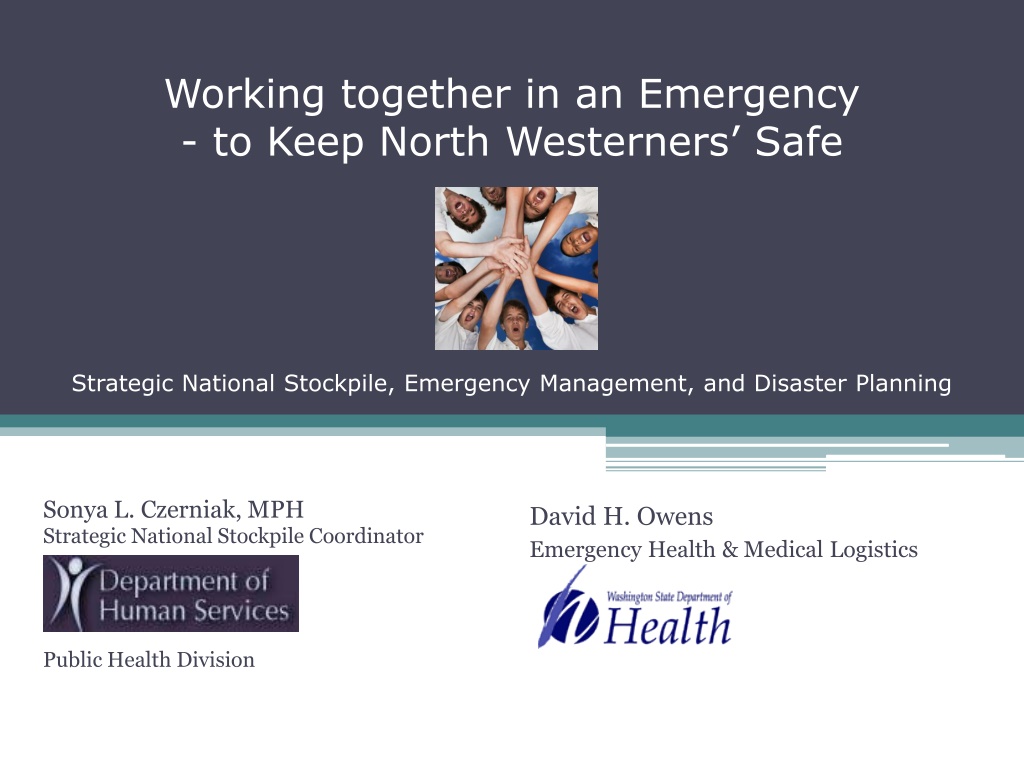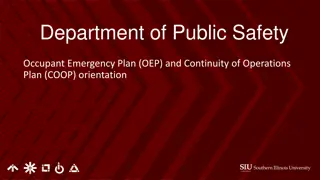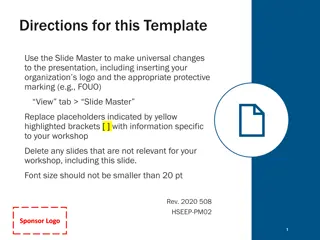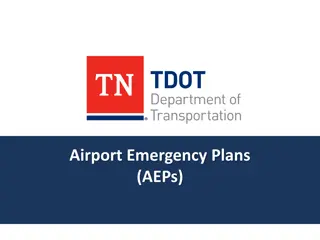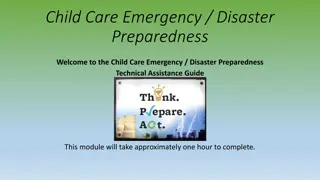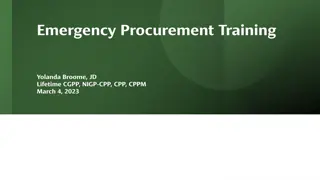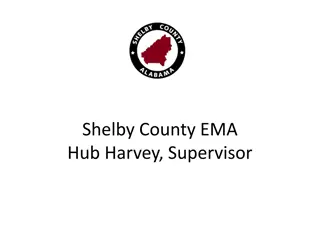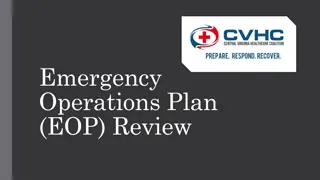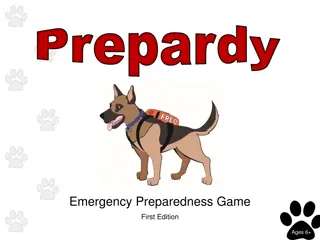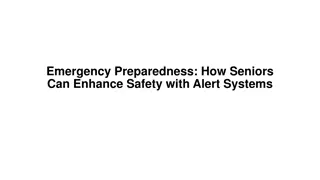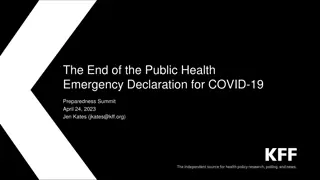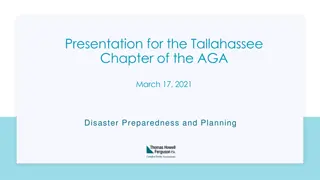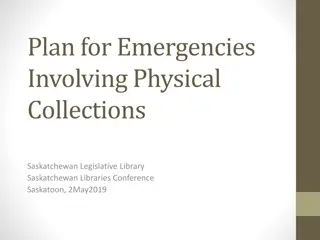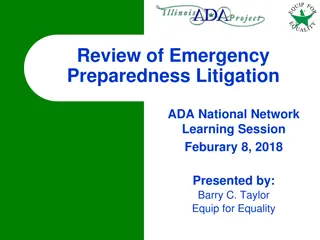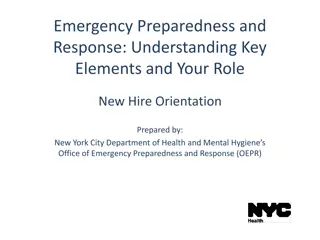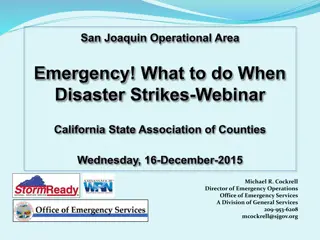Emergency Preparedness and Strategic Stockpiling for Public Safety
Strategic National Stockpile (SNS) plays a crucial role in emergency management by providing essential pharmaceuticals and medical supplies during public health crises. Established in 1999, the SNS offers flexible response through Push Packages, Managed Inventory, and Field Medical Stations. These resources are strategically positioned nationwide to ensure rapid deployment in times of need, such as natural disasters, terrorist attacks, or disease outbreaks.
Download Presentation

Please find below an Image/Link to download the presentation.
The content on the website is provided AS IS for your information and personal use only. It may not be sold, licensed, or shared on other websites without obtaining consent from the author. Download presentation by click this link. If you encounter any issues during the download, it is possible that the publisher has removed the file from their server.
E N D
Presentation Transcript
Working together in an Emergency - to Keep North Westerners Safe Strategic National Stockpile, Emergency Management, and Disaster Planning Sonya L. Czerniak, MPH Strategic National Stockpile Coordinator David H. Owens Emergency Health & Medical Logistics Public Health Division
CDC Strategic National Stockpile National repository of life-saving pharmaceuticals and medical supplies to protect the American public if there is a public health emergency severe enough to cause local supplies to run out.
SNS History 1999 Congress charged the HHS with creating a national pharmaceutical stockpile, the NPS was created within the CDC. Provide within 12 hours of the decision to deploy Deployments include: New York City on 9/11/01, two push packages. Anthrax 2001, managed inventory. Hurricane Katrina, 8/25/2005. Haiti earthquake, 1/12/2010. Numerous exercises with States.
SNS Structure The SNS is organized for flexible response! If the threat agent is unknown, the first line of support is the 12-hour Push Package. If the threat agent is known, CDC officials can send Managed Inventory. If a disaster calls for evacuation or Medical surge, the CDC can send Field Medical Stations. Positioned strategically all over U.S. Nerve agent exposure requires extremely rapid response, so CHEMPACK is forward deployed to states.
12-hour Push Package Package contains pharmaceuticals, medical supplies, antidotes (unknown event) 130 air cargo containers 50-tons 500,000 10-day courses of antibiotics Airway supplies IV supplies
Managed Inventory 98% of the SNS inventory Can be tailored to the specific event agent Includes Pharmaceuticals Hydration/IV fluids and supplies Medical/Surgical supplies Airway management supplies Personal Protective Equipment Repackaging Equipment and Ventilators
Field Medical Stations A Federal Medical Station (FMS) is a Department of Health and Human Services (DHHS)/Assistant Secretary for Preparedness and Response (ASPR) deployable asset. The Division of Strategic National Stockpile is responsible for the deployment of FMS when directed by DHHS. 250 bed station in 50 bed increments State/Local/Tribal responsibilities to provide: 40,000 square foot ADA compliant facility Power, water, waste pickup, rest rooms, showers, etc.
CHEMPACK The mission of the CHEMPACK Program is to forward place a sustainable resource of nerve agent antidotes throughout the United States, where it will be rapidly available to state and local emergency responders and enhance their capability to respond quickly to a large-scale nerve agent exposure. States deploy these resources strategically to population centers of greatest vulnerability.
When and Why Disaster will require rapid access to large quantities of resources County and states do not have the required resources National stockpile created as a resource for all
CRI The Cities Readiness Initiative (CRI) is a federal effort designed to increase bioterrorism preparedness in the nation's larger cities. Increase bioterrorism preparedness Save Lives; medicine into entire population within 48 hours 72 Metropolitan statistical areas (MSAs) across the U.S. included
Oregon & Washington Natural Hazards Earthquake Landslides Volcanic Eruptions Windstorms Winter weather Tornadoes Tsunamis Floods
Not so natural Threats Chemical Biological Radiological Nuclear blast Explosive
Pandemic Influenza flu.oregon.gov Figure 1: EIP Lab-Confirmed Influenza Hospitalizations in 2009 120 100 80 60 40 20 0 Wave 1 Spring 2009 Wave 2 Fall 2009 Clackamas, Multnomah, and Washington Counties only Source: ACDP, Public Health Division, Oregon DHS
Emergency Response Agency Operations Center 24/7 Activated in September 63 of the 72 days Good deodorant
Requests for assets Market supply of pandemic flu assets Tamiflu suspension N95 masks Ventilators Associated medications
Lessons Learned Stand down After Action Reports CDC TAR Rewriting plans Cross border agreements Warehouse selection
Employment GIS Statistician Lawyer Public Health Information Technology Medical Degree Law Enforcement Business Veterinarian Epidemiologist
Ferret Talking Points Believe in yourself Take healthy risks Trust your instincts Go for it!
Thank you! sonya.l.czerniak@state.or.us (971) 673-0327 david.owens@doh.wa.gov (360) 236-4417
